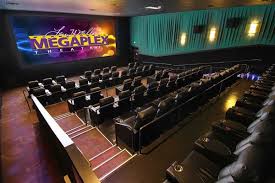Introduction to Web 3.0
Web 3.0 represents the next phase of the internet’s evolution, offering a more interconnected, intelligent, and open web experience. This new era marks a significant shift from the user-centric Web 2.0, introducing technologies that fundamentally change how users interact with the digital world. This article explores the potential of Web 3.0 in revolutionizing local brick and mortar businesses.
Web 3.0 and Its Impact on the Digital Landscape
Web 3.0 is redefining the digital landscape with its key characteristics like decentralization, user sovereignty, and enhanced connectivity. It promises a more democratic and efficient web where users have greater control over their data and digital interactions.
Bridging Web 3.0 with Brick and Mortar Businesses
The integration of Web 3.0 with traditional brick and mortar businesses creates a unique synergy, blending the physical and digital realms. Real-world examples demonstrate how this integration is not only possible but also beneficial in offering innovative solutions and experiences to customers.
Transformative Technologies in Web 3.0
Technologies such as blockchain, cryptocurrencies, AI, and the Internet of Things (IoT) are at the heart of Web 3.0. These technologies offer new ways for businesses to interact with customers, streamline operations, and secure transactions.
Enhancing Customer Experience with Web 3.0
Web 3.0 technologies enable personalized and engaging customer experiences. Augmented Reality (AR) and Virtual Reality (VR) are particularly impactful, offering immersive experiences that bridge the gap between online and offline worlds.
Web 3.0 and E-commerce for Local Businesses
For local businesses, Web 3.0 offers new avenues for e-commerce. This includes integrating cryptocurrency payments and leveraging decentralized marketplaces, thus opening up global markets and reducing transaction costs.
Data Security and Privacy in the Web 3.0 Era
One of the paramount benefits of Web 3.0 is enhanced data security and privacy. Blockchain technology plays a crucial role in this, providing a secure and transparent framework for handling customer data.
Marketing in the Age of Web 3.0
Marketing strategies in the Web 3.0 era need to be more targeted and personalized. The use of social media influencers and niche marketing are effective ways to connect with specific customer segments.
Building a Web 3.0-Ready Infrastructure
To harness the benefits of Web 3.0, local businesses must upgrade their technology infrastructure. This involves not just technological upgrades but also investing in training and skill development for staff.
Overcoming Challenges in Adopting Web 3.0
Adopting Web 3.0 technologies comes with its set of challenges, including technological barriers and the need for customer adaptation. Businesses must navigate these carefully to successfully integrate Web 3.0 into their operations.
Future Trends in Web 3.0 for Local Businesses
The future of Web 3.0 for local businesses looks promising, with trends like predictive analysis and the expanding role of AI and IoT. These technologies will continue to open new opportunities for growth and innovation.
Measuring the Impact of Web 3.0
To gauge the effectiveness of Web 3.0 integration, businesses need to monitor specific KPIs and gather customer feedback. This data is crucial in understanding the impact and guiding future strategies.
Conclusion
Web 3.0 is set to be a game changer for local brick and mortar businesses, offering them unprecedented opportunities to innovate and grow in the digital age. As we look forward, the potential for these businesses to thrive in this new era is immense, marking an exciting chapter in the retail and service sectors.






